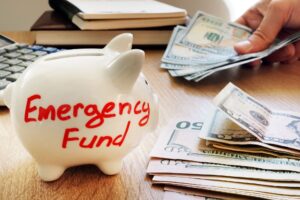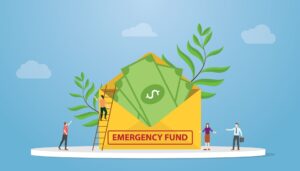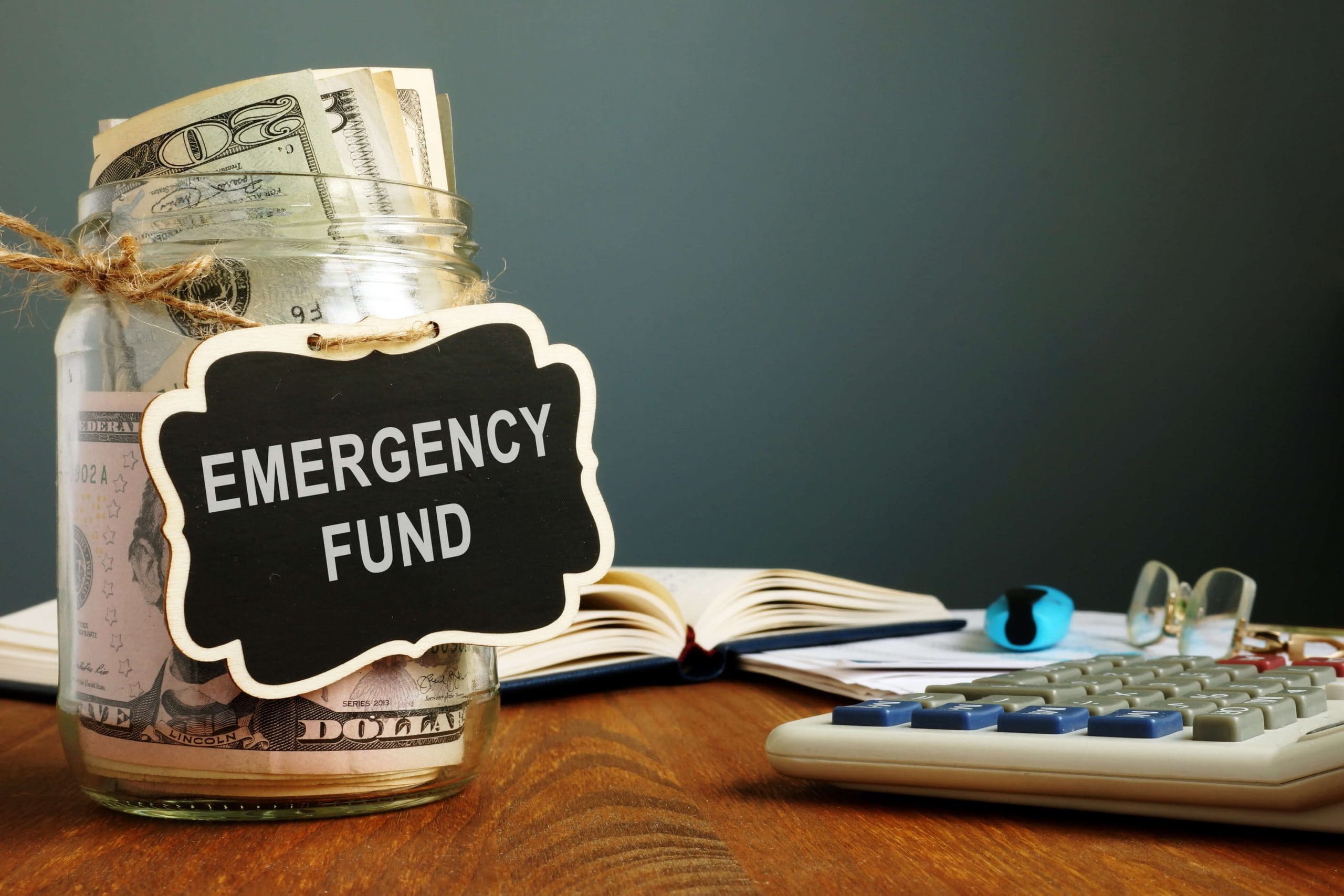In today’s uncertain world, having a robust emergency fund is a crucial component of achieving financial security. Life is full of unexpected events, such as medical emergencies, job loss, or car repairs, that can leave us vulnerable if we are unprepared. Building an emergency fund provides a financial safety net, ensuring that you can navigate through unforeseen circumstances without falling into debt or compromising your long-term financial goals.
In this blog post, we will explore seven effective strategies to help you in building an emergency fund and achieve financial security.
What is an Emergency fund?

An emergency fund is a savings account specifically set aside to cover unforeseen financial emergencies. It serves as a safety net, providing individuals with financial security and stability when unexpected expenses arise, such as medical bills, job loss, or car repairs. The fund should be easily accessible, sufficiently sized (usually three to six months of living expenses), and used solely for genuine emergencies. Regular contributions to the fund ensure its growth over time, offering peace of mind and protection from debt in times of crisis.
Why do I need an Emergency fund?

An emergency fund is essential for several reasons. Firstly, life is unpredictable, and unexpected events can happen at any time, such as sudden job loss, medical emergencies, or major home repairs. Having an emergency fund provides a financial safety net, allowing you to handle these situations without resorting to high-interest debt or derailing your long-term financial goals.
An emergency fund promotes financial stability. It protects you from being forced to make hasty and potentially detrimental financial decisions in times of crisis. With an emergency fund in place, you can handle unexpected expenses or income disruptions without disrupting your regular budget or jeopardizing your financial well-being.
Additionally, an emergency fund can save you money in the long run. By having funds readily available for emergencies, you can avoid high-interest loans or credit card debt that accrue over time. Instead of paying interest, you can use your emergency fund to cover immediate expenses, potentially saving you hundreds or even thousands of dollars in interest payments.
7 Strategies for Building an Emergency Fund

- Set Clear Goals: Begin by defining your financial goals and determining how much you want to save in your emergency fund. It’s recommended to aim for at least three to six months’ worth of living expenses. Break down the total amount into manageable monthly or weekly targets to make the saving process more attainable.
- Create a Budget: Developing a realistic budget is a fundamental step towards building an emergency fund. Track your income and expenses, identify areas where you can cut back, and allocate a portion of your income specifically for savings. By monitoring and controlling your spending, you can free up more money to contribute towards your emergency fund.
- Automate Savings: Take advantage of automation tools provided by your bank to make saving effortless. Set up automatic transfers from your checking account to a separate savings account dedicated solely to your emergency fund. This way, a portion of your income will be saved without you having to think about it actively.
- Reduce Expenses: Look for opportunities to reduce your monthly expenses and save more towards your emergency fund. Evaluate your discretionary spending and identify areas where you can make cutbacks. For instance, you could dine out less frequently, cancel unused subscriptions, or negotiate better deals on utilities and insurance. Every dollar saved can contribute to your emergency fund.
- Increase Your Income: Boosting your income can accelerate your progress in building an emergency fund. Consider taking on a side gig, freelancing, or exploring opportunities for career advancement. The additional income generated can be directed towards your emergency savings, helping you reach your financial security goals faster.
- Prioritize Debt Repayment: If you have outstanding debts, prioritizing their repayment is vital. High-interest debt, such as credit card debt or personal loans, can impede your ability to save effectively. Allocate a portion of your budget towards debt repayment while maintaining a consistent contribution to your emergency fund. Once your debts are paid off, redirect the money previously used for debt towards your savings.
- Protect Your Emergency Fund: While building your emergency fund, it’s essential to protect it from impulsive spending or using it for non-emergency purposes. Consider keeping the funds in a separate account that is not easily accessible for day-to-day transactions. Also, educate yourself on the difference between true emergencies and other financial needs to ensure the funds are reserved for their intended purpose.
Also, read 7 Smart Ways to Save Money from Your Salary.
How Much Emergency Fund Should I Have?

The ideal amount for an emergency fund varies based on individual circumstances. As a general guideline, it is recommended to save three to six months’ worth of living expenses. However, factors such as income stability, dependents, and job volatility should be considered to determine a more accurate target. Starting with at least one month’s expenses and gradually building from there is a good approach. Regularly reassess your fund as your financial situation changes to ensure it remains sufficient to provide a safety net during unexpected events.
The primary goal of an emergency fund is to provide financial security and peace of mind. Having an adequate reserve allows you to handle unforeseen situations, such as job loss or medical emergencies, without resorting to debt or compromising your long-term financial goals. While the exact amount may vary, having any amount saved for emergencies is a step in the right direction. Striking a balance between building a sufficiently sized fund and pursuing other financial objectives is key, ensuring you have a safety net while still making progress towards your overall financial well-being.
How Long does it take to Build an Emergency Fund?
The time required to build an emergency fund varies depending on factors such as monthly savings, target amount, income, expenses, financial discipline, and unexpected events. While it is challenging to provide an exact timeframe, starting as soon as possible and maintaining consistent savings will help you steadily progress towards your goal. Whether it takes several months or years, the important thing is to remain committed to your savings plan and recognize that even a small emergency fund provides valuable protection.
Where Should I Keep Emergency Fund?
When deciding where to keep your emergency fund, it’s important to consider accessibility, safety, and potential for growth. Here are a few options to consider:
- High-Yield Savings Account: A high-yield savings account is a popular choice for an emergency fund. It offers a competitive interest rate while providing easy access to your funds. Look for accounts with no or low minimum balance requirements and no monthly fees to maximize the growth potential of your emergency fund.
- Short-Term Fixed Deposits (FDs): Short-term FDs are similar to regular FDs but with shorter maturity periods. They offer a fixed interest rate for a specific duration, usually ranging from a few weeks to a few months. Short-term FDs can be a suitable choice if you want to earn a slightly higher interest rate than a savings account while ensuring the principal amount is accessible after a relatively short period.
- Liquid Funds: Liquid funds are a type of mutual fund that primarily invests in highly liquid and low-risk instruments such as treasury bills, certificates of deposit, and short-term government securities. These funds offer easy redemption and quick access to your funds. While liquid funds can provide better returns than traditional savings accounts.
Also, read Top 3 Powerful Peter Lynch Books for Aspiring Investors.
Conclusion
Building an emergency fund is a key step towards achieving financial security. By following the strategies outlined in this blog post – setting clear goals, creating a budget, automating savings, reducing expenses, increasing income, prioritizing debt repayment, and protecting your emergency fund – you can develop a solid financial foundation and protect yourself from unforeseen circumstances. Remember, the journey toward financial security starts with small, consistent steps, and building an emergency fund is a significant milestone along the way. Start today, stay committed, and enjoy the peace of mind that comes with being financially prepared.
Frequently Asked Questions-
How to start building an emergency fund?
To start building an emergency fund:
- Set a savings goal and allocate a portion of your income towards it consistently.
- Automate savings, reduce unnecessary expenses, and monitor and adjust your plan over time for steady progress.
What should an emergency fund cover?
An emergency fund should ideally cover unexpected expenses and financial setbacks such as:
- Medical emergencies or unexpected healthcare costs.
- Job loss or unemployment periods.
- Home or car repairs.
- Unexpected travel expenses.
- Essential living expenses in case of a temporary loss of income.
- Legal or professional fees in case of unforeseen circumstances.
- Any other urgent and unforeseen financial needs that may arise. The goal is to have enough funds to cover these expenses without resorting to debt or compromising your financial stability.
How much money do you need to build an emergency fund?
The amount of money needed to build an emergency fund varies, but a general guideline is to save three to six months' worth of living expenses. However, it's important to assess your individual circumstances and financial obligations to determine the ideal target amount for your emergency fund.
